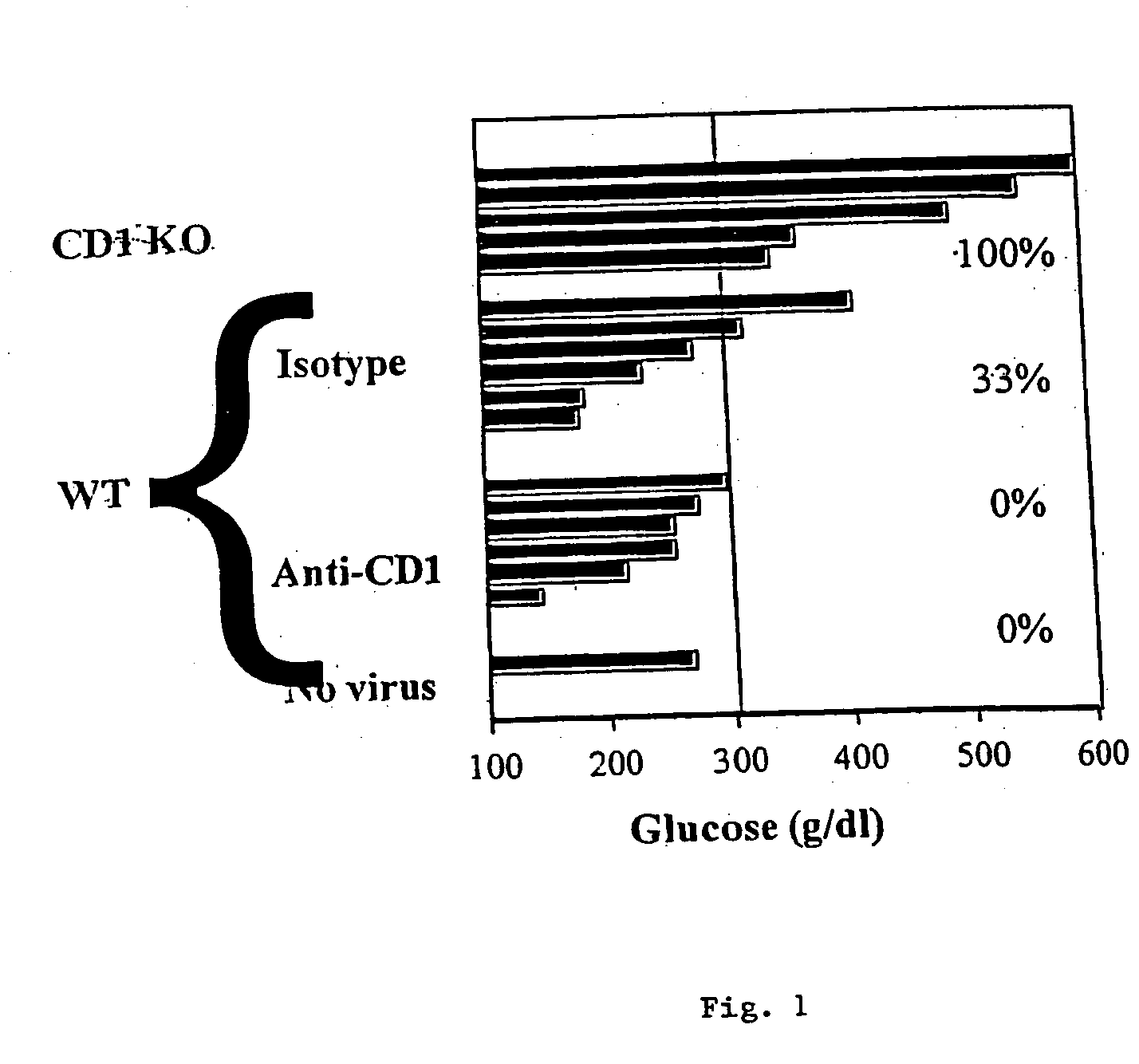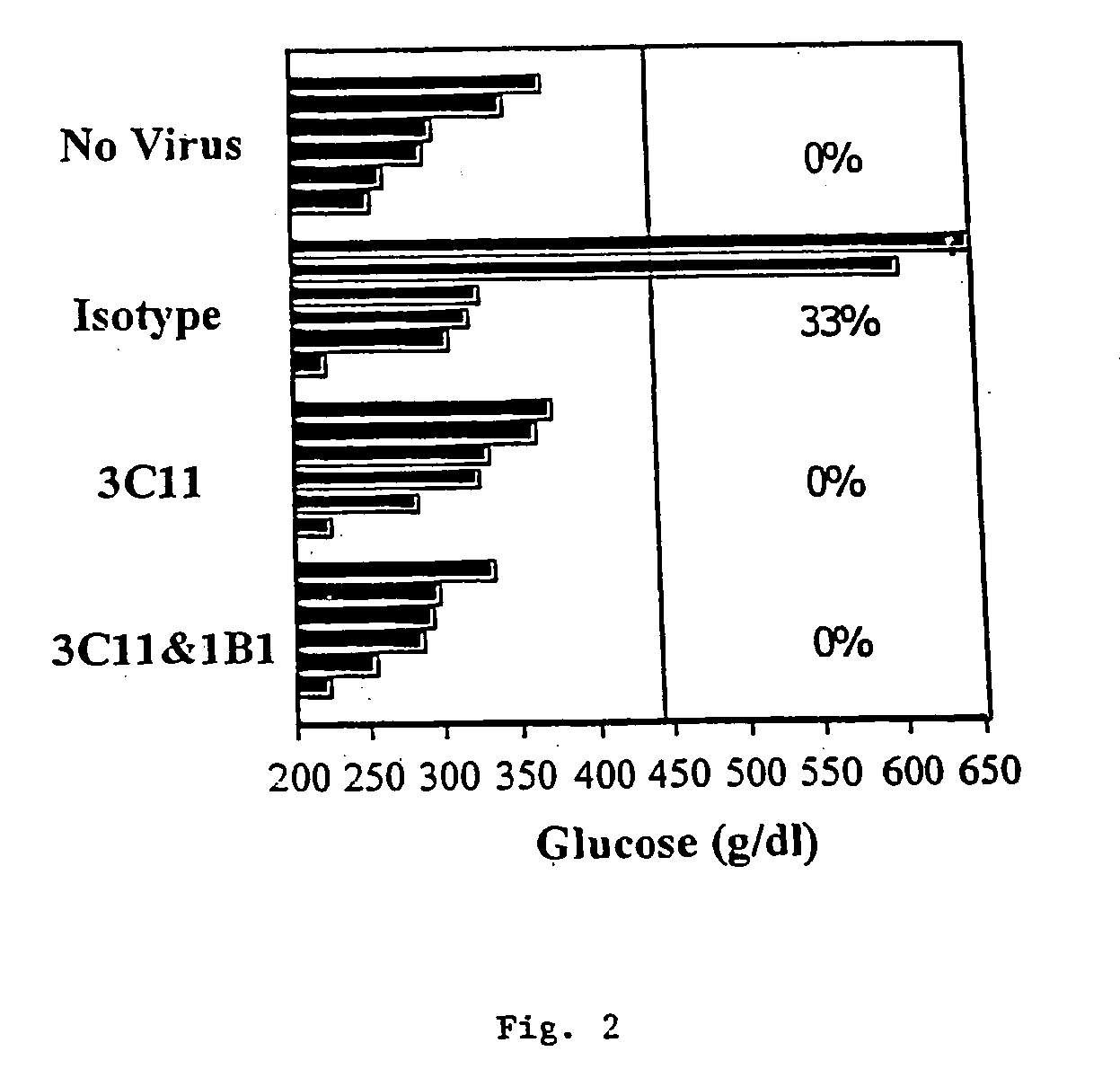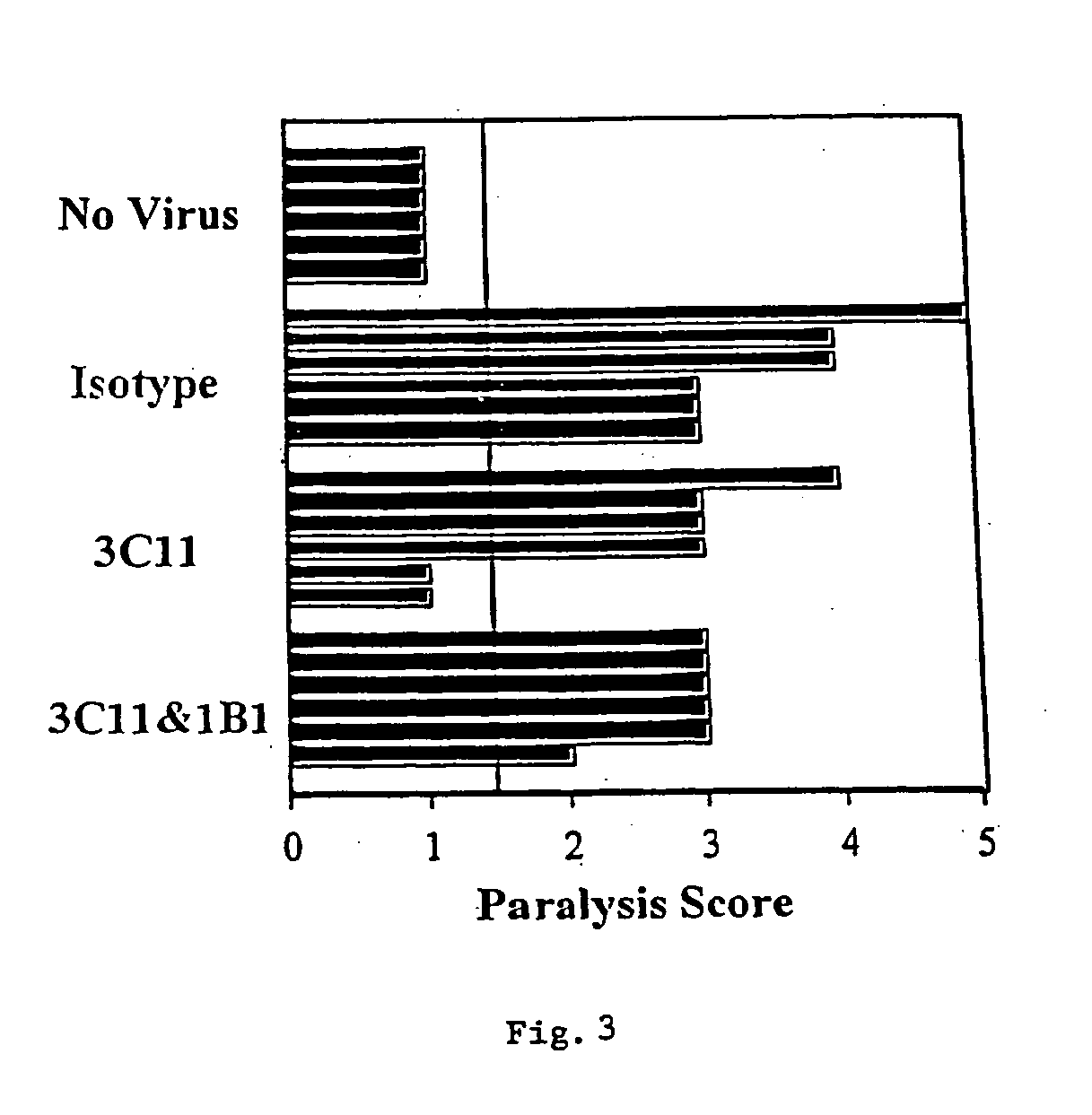Use of anti-cd1 antibodies for the modulation of immune responses
an immune response and anti-cd1 technology, applied in the field of use of anti-cd1 antibodies for the modulation of immune responses, to achieve the effect of simplifying the procedur
- Summary
- Abstract
- Description
- Claims
- Application Information
AI Technical Summary
Benefits of technology
Problems solved by technology
Method used
Image
Examples
example 1
Generation of anti-CD1 Antibodies
[0092] The generation of the 3C11 and 51.1 anti-CD1 antibodies has been described previously (see, for example, Bleicher et al., Science 250:679-682, 1990; Exley, Immunology 100:37-47, 2000; Kasinrerk et al., J Immunol 150(2):579-84, 1993; Dezutter-Dambuyant et al., Res Immunol 140(4):377-90, 1989; Kahn-Perles et al., J. Immunol. 134(3):1759-65, 1985; Porcelli et al., Nature 241(6241):447-50, 1989).
[0093] The 3C11 monoclonal antibody used in the experiments described herein was obtained from Dr. Steven Porcelli (formerly at Brigham & Women's Hospital, Mass.; now at Einstein College of Medicine, NY), who generated the antibody using antigen provided by Dr. Steven Balk. Additionally, the 1B1 anti-mouse CD1 monoclonal antibody is commercially available from Pharmingen.
[0094] For the production of additional anti-CD1 antibodies and hybridomas, a peptide from CD1, the entire CD1 protein, or APCs can be used. For example, an antigenic peptide is coupled...
example 2
Prevention and Treatment of Viral Infection using anti-CD1 Antibodies
[0097] The picornavirus, diabetogenic encephalomyocarditis virus (EMCV-D), causes lethal, acute disease in young male mice of appropriate strains. Female and older male mice are resistant. The severity of EMCV-D-induced disease varies in different genetic backgrounds, BALB / c being most sensitive and C57 / B16 being most resistant. Contributions of NK cells, macrophages, and T cells to responses against various EMCV strains also vary in different strains. EMCV-D-induced disease can be measured by hind-limb paralysis (a manifestation of encephalitis) and glucose-tolerance testing (diabetes), reflecting acute, cytopathic effects of the virus on neuronal cells and islet cells, respectively. A further manifestation of EMCV-D infection is myocarditis. EMCV induced myocarditis involves limited, direct, viral damage in conjunction with extensive mononuclearcell infiltration.
[0098] To determine the ability of anti-CD1 antib...
example 3
Ability of Anti-CD1 Antibodies to Enhance Production of Cytokines by Murine and Human Antigen Presenting Cells
[0101] IL-12 is an inducible cytokine composed of 35 kDa and 40 kDa subunits that are critical in inducing helper type 1 T cells during initial immune responses to pathogens. The 40 kDa subunit, expressed by activated antigen presenting cells, is induced by pathogens. Control of IL-12 p40 expression is therefore important for understanding resistance and susceptibility to pathogens.
[0102] To demonstrate the ability of anti-CD1 antibodies to increase the production of IL-12, mouse CD1d positive splenocyte cells, human peripheral blood mononuclear cells (PBMC), and human THP-1 monocytic cell line were analyzed. PBMC were obtained from healthy adult volunteers of both sexes on Ficoll Hypaque density gradients and cultured in complete medium consisting of RPMI 1640 and 10% FBS. THP-1 is a human monocytic leukaemia cell line. Compared to other human myeloid cell lines, such as ...
PUM
| Property | Measurement | Unit |
|---|---|---|
| Fraction | aaaaa | aaaaa |
| Ratio | aaaaa | aaaaa |
Abstract
Description
Claims
Application Information
 Login to View More
Login to View More - R&D
- Intellectual Property
- Life Sciences
- Materials
- Tech Scout
- Unparalleled Data Quality
- Higher Quality Content
- 60% Fewer Hallucinations
Browse by: Latest US Patents, China's latest patents, Technical Efficacy Thesaurus, Application Domain, Technology Topic, Popular Technical Reports.
© 2025 PatSnap. All rights reserved.Legal|Privacy policy|Modern Slavery Act Transparency Statement|Sitemap|About US| Contact US: help@patsnap.com



